Abstract
Titres of haemagglutination-inhibiting antibody have been measured repeatedly in young women during a period of 6-8 years after the administration of RA27/3 and Cendehill attenuated rubella vaccines. Mean antibody titres were initially 217 after RA27/3 and 159 after Cendehill, but the difference diminished after the first year. Antibody titres were subsequently well maintained in both groups and did not reveal any need for regular revaccination. Mean titres in the Cendehill group were partly maintained by symptomless reinfection which was commoner after Cendehill than after RA27/3. Significant falls in titre were equally common after both vaccines, but low titres of 30 or less were more frequent in subjects who had received Cendehill. Mean neutralizing antibody titres were initially 15.4 after RA27/3 vaccine and 9 after Cendehill. Titres remained higher after RA27/3 for 3 years, but the difference then diminished and became insignificant during the fifth year. Revaccination of women with low antibody titres produced significant increases in 69% of subjects when standard RA27/3 vaccine was used; a special preparation of RA27/3 of higher potency produced a similar number of rises (70%) but elicited higher titres and might occasionally be useful for revaccinating women who are likely to come into contact with rubella. Challenge with RA27/3 vaccine produced weaker responses in women who had experienced natural infection than in those whose antibody was vaccine-induced. Rises in antibody titre after revaccination consisted mainly of IgG, but traces of IgM antibody were detected in one vaccinee who had recently experienced natural reinfection and in 1 woman with naturally acquired antibody who had been challenged with high titre RA27/3 vaccine.
Full text
PDF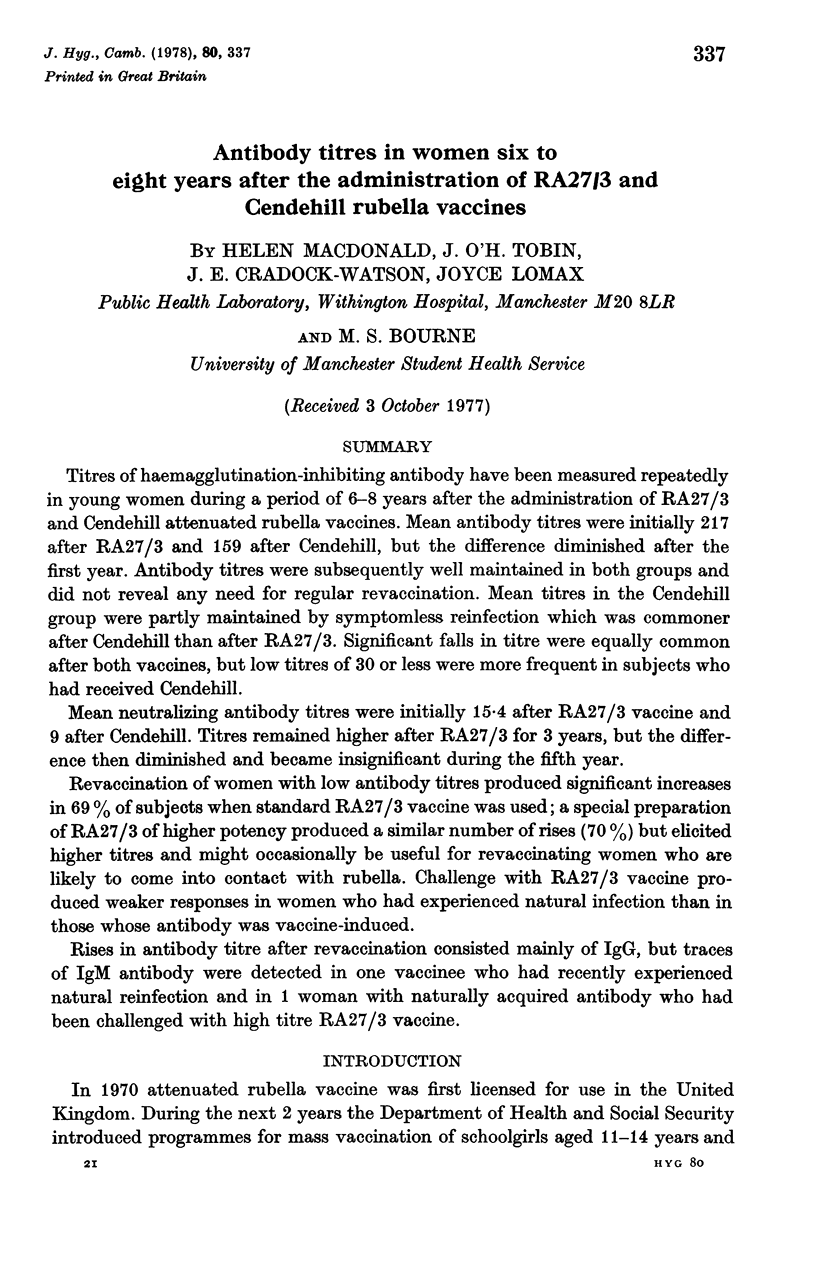
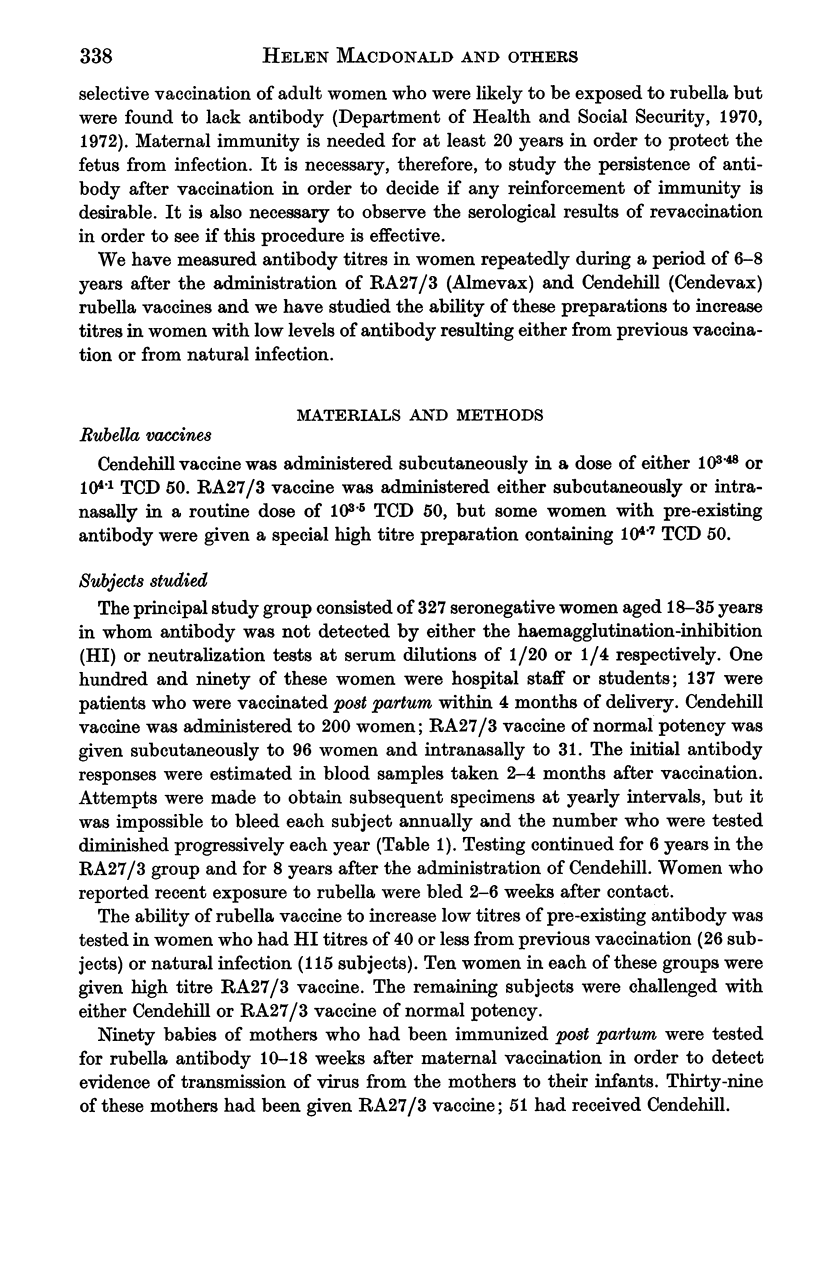

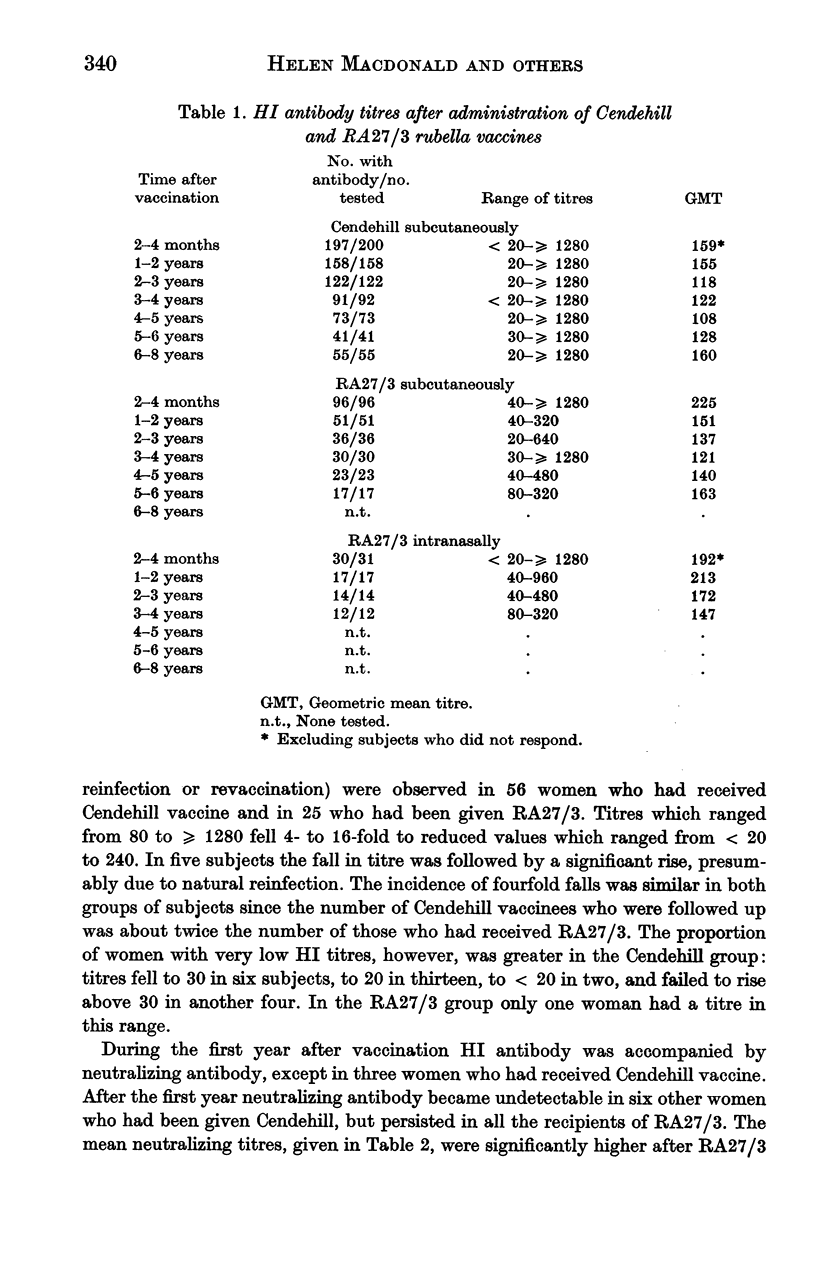
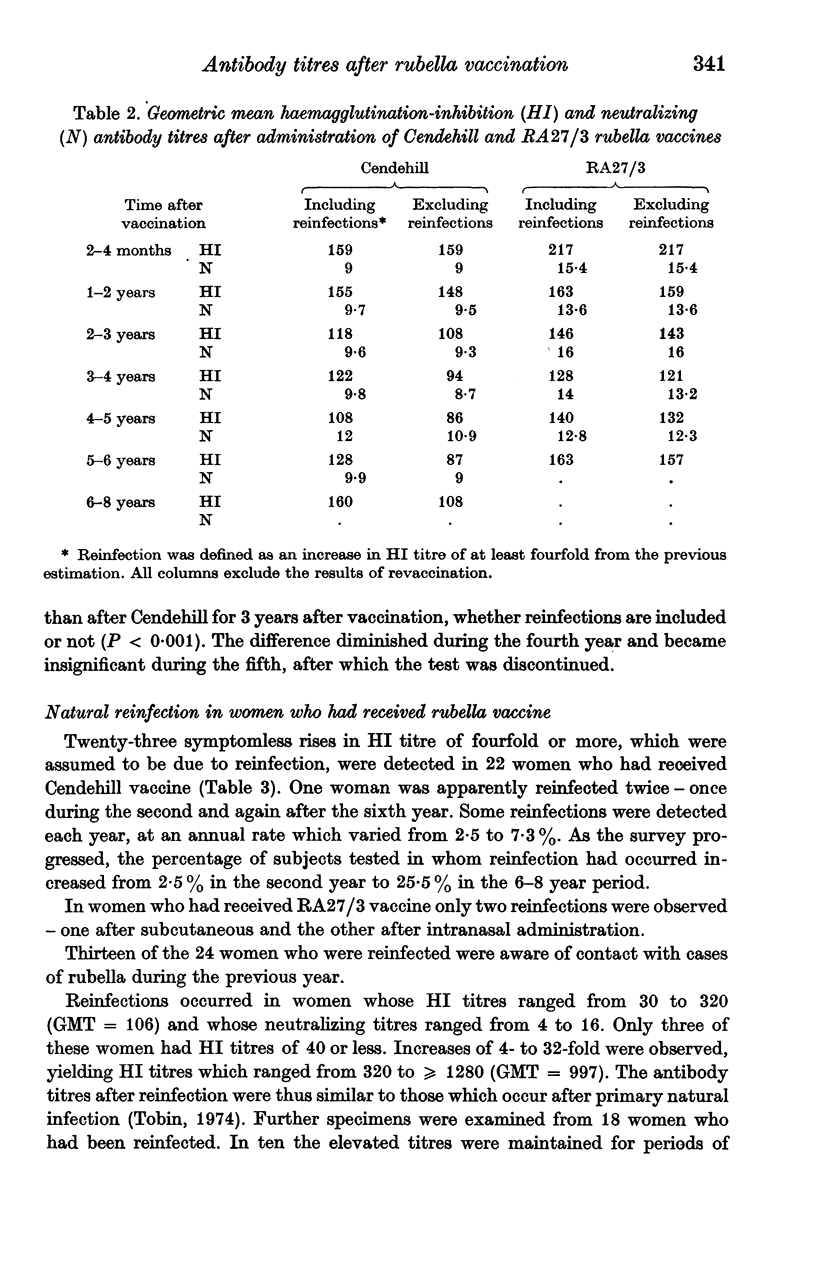
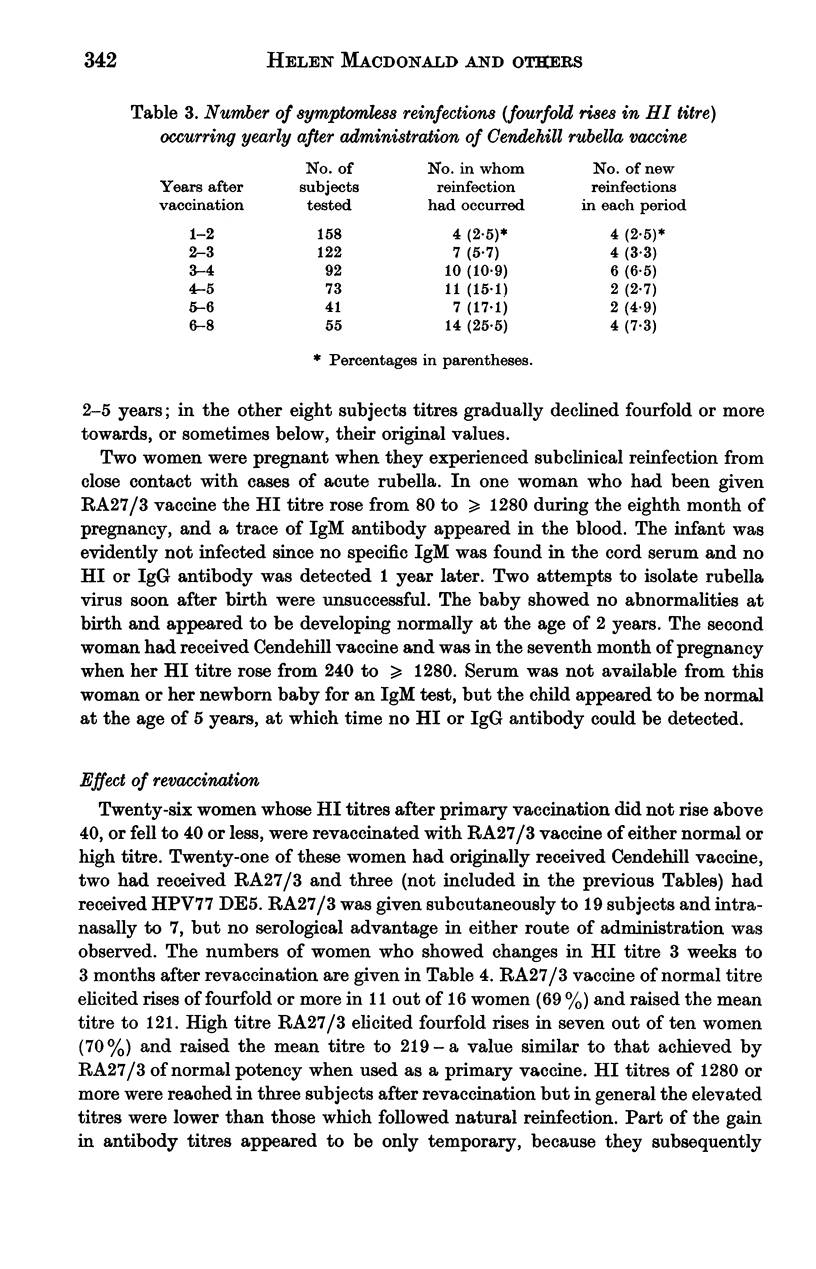
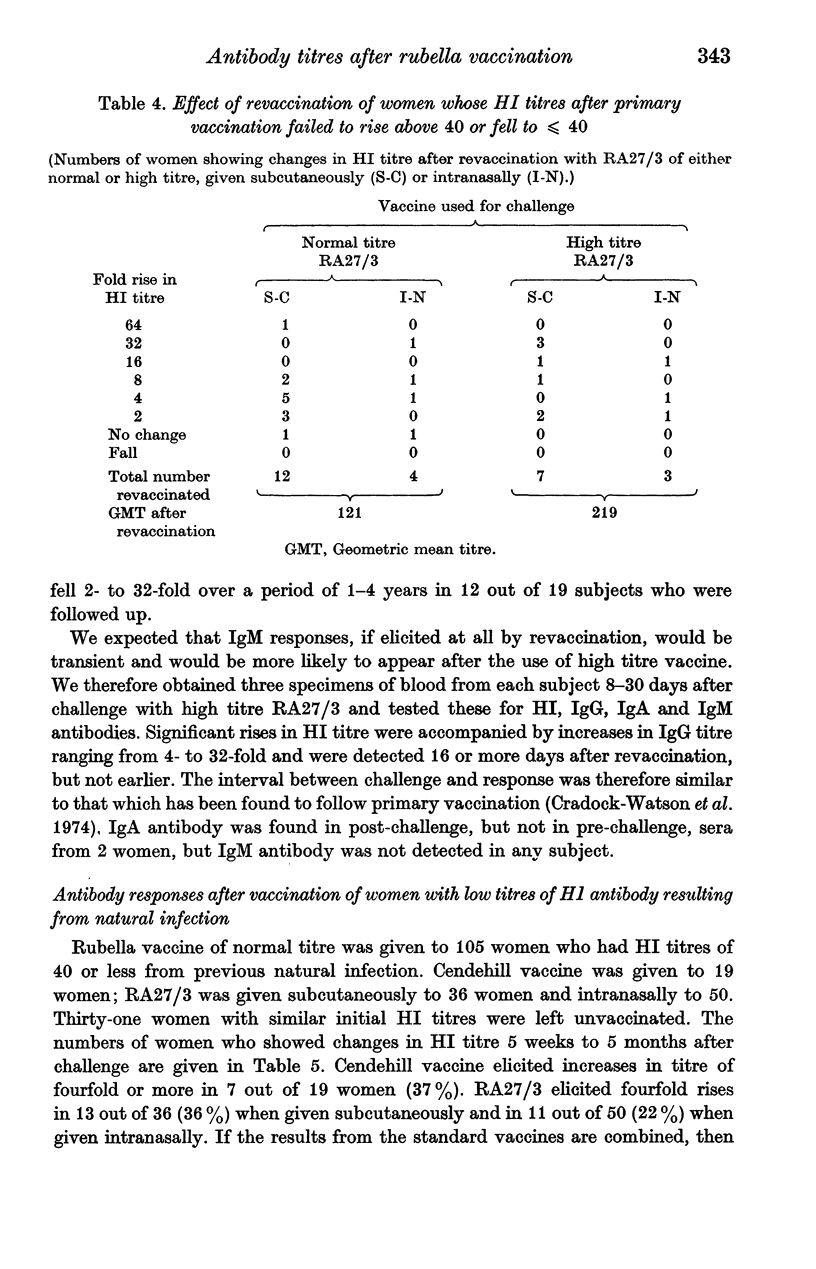
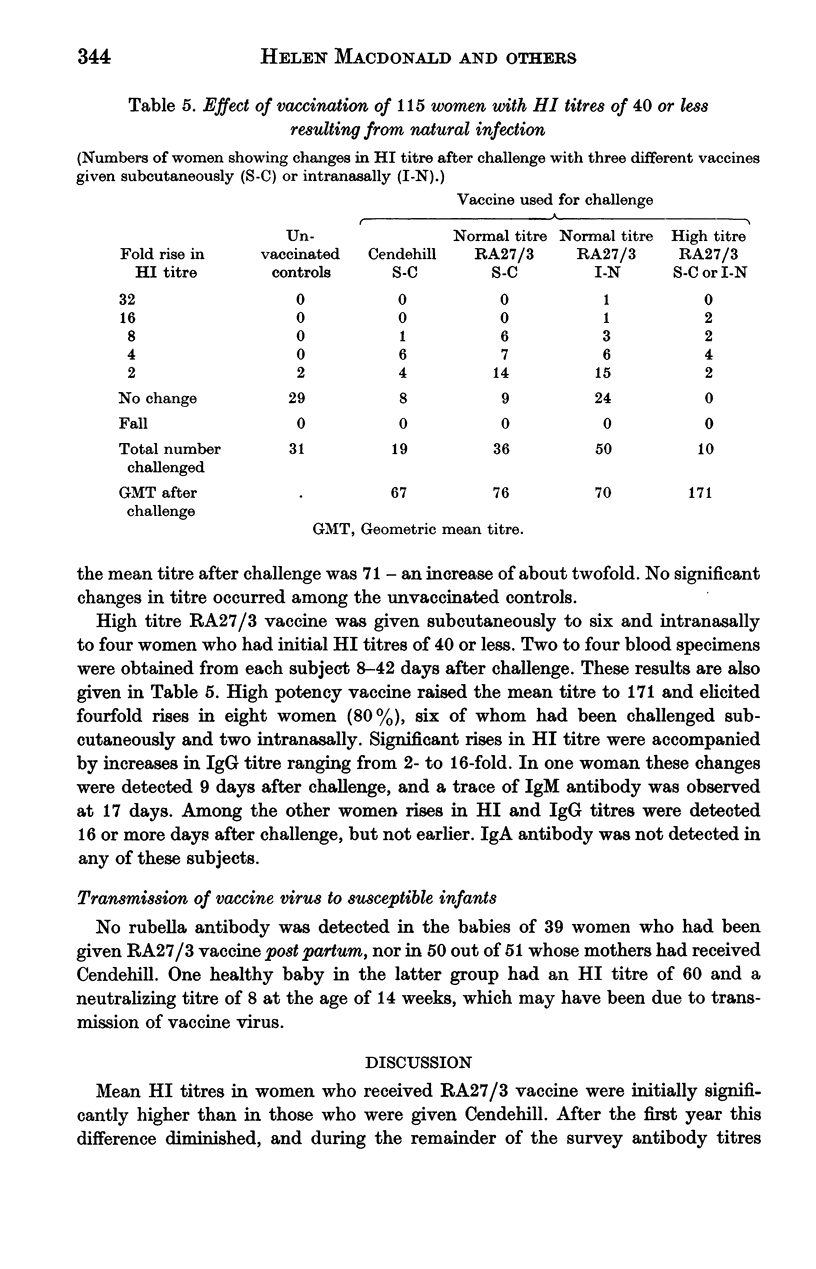
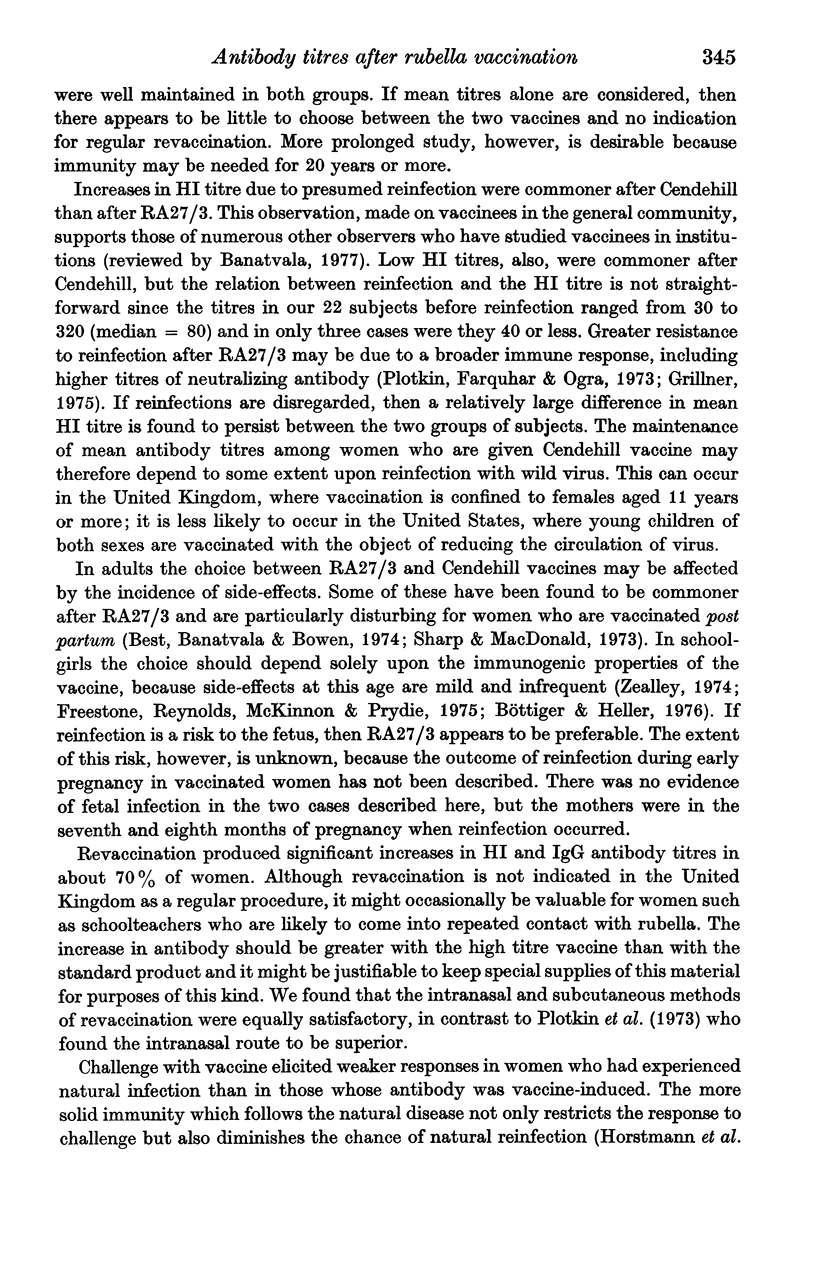
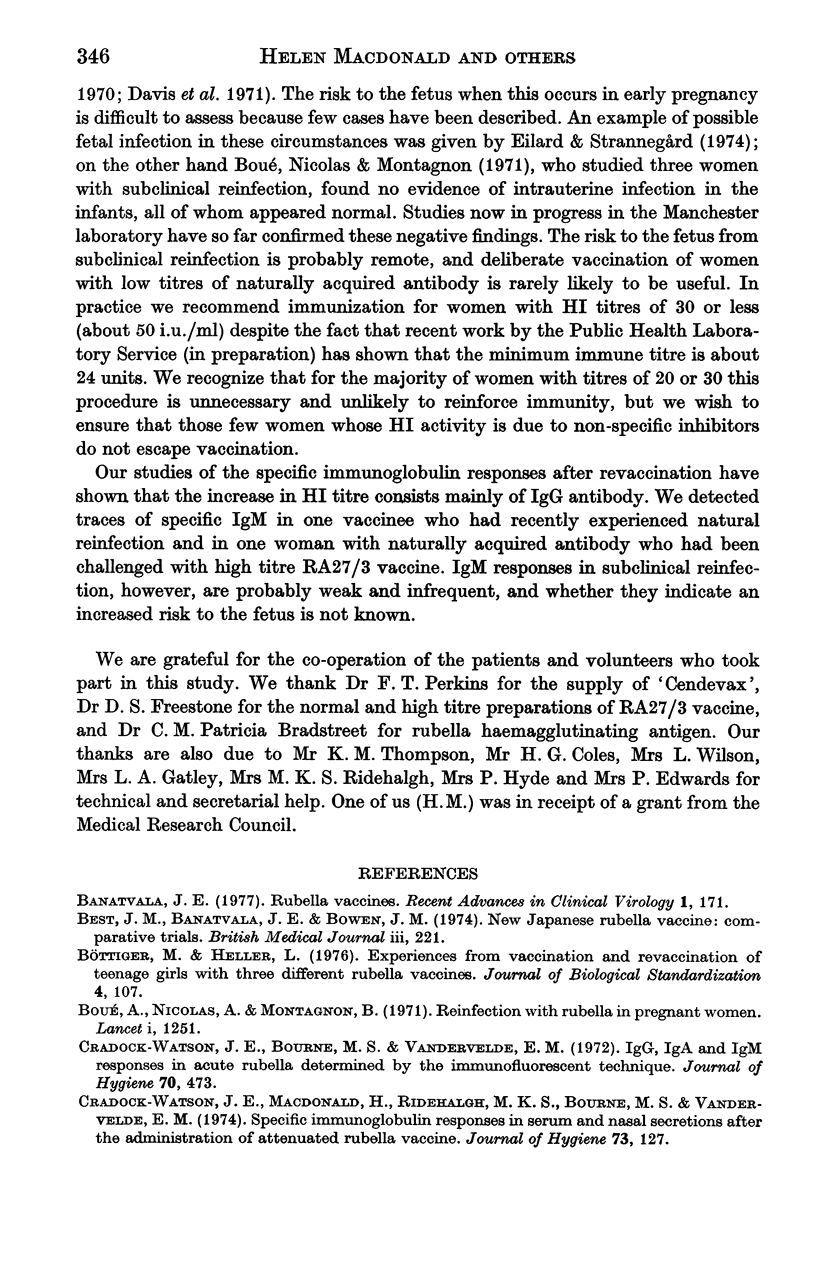
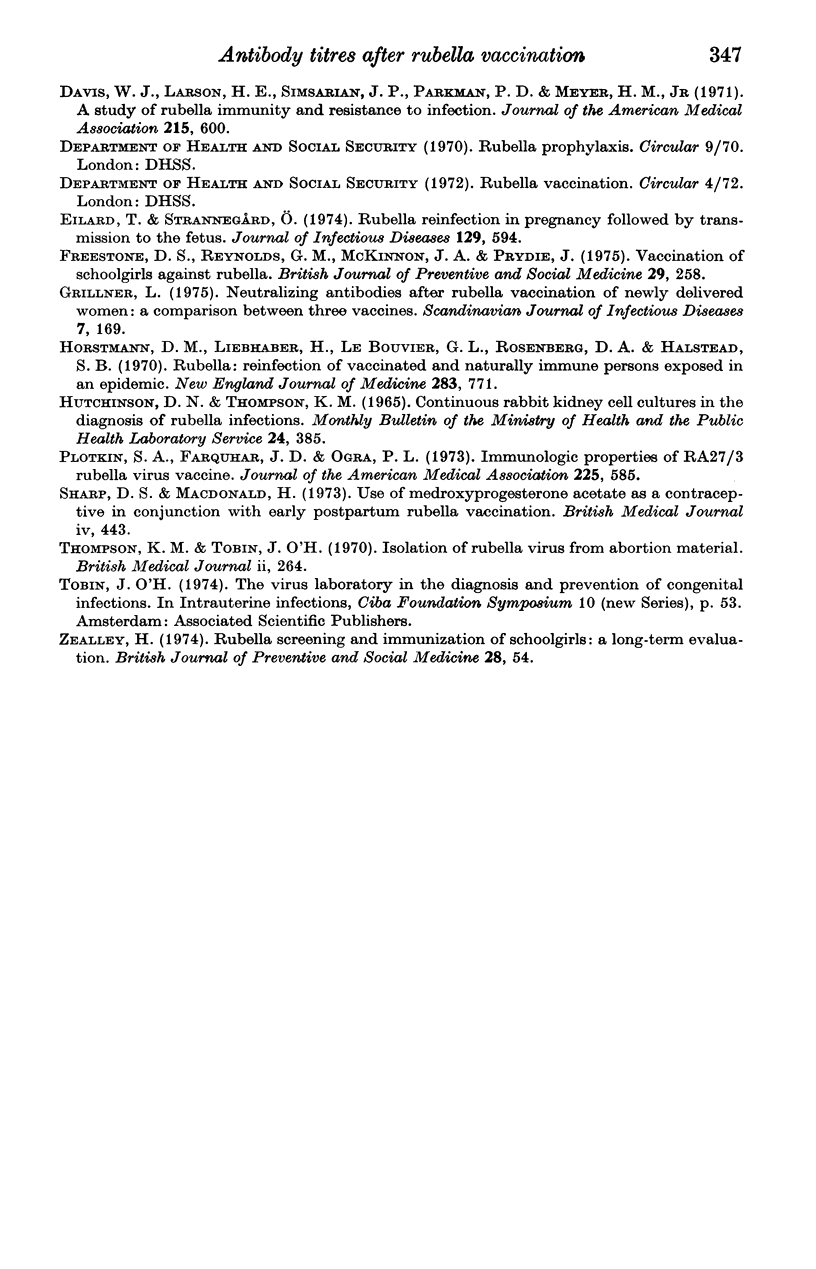
Selected References
These references are in PubMed. This may not be the complete list of references from this article.
- Best J. M., Banatvala J. E., Bowen J. M. New Japanese rubella vaccine: comparative trials. Br Med J. 1974 Jul 27;3(5925):221–224. doi: 10.1136/bmj.3.5925.221. [DOI] [PMC free article] [PubMed] [Google Scholar]
- Boué A., Nicolas A., Montagnon B. Reinfection with rubella in pregnant women. Lancet. 1971 Jun 19;1(7712):1251–1253. doi: 10.1016/s0140-6736(71)91775-2. [DOI] [PubMed] [Google Scholar]
- Böttiger M., Heller L. Experiences from vaccination and revaccination of teenage girls with three different rubella vaccines. J Biol Stand. 1976 Apr;4(2):107–114. doi: 10.1016/0092-1157(76)90020-2. [DOI] [PubMed] [Google Scholar]
- Cradock-Watson J. E., Bourne M. S., Vandervelde E. M. IgG, IgA and IgM responses in acute rubella determined by the immunofluorescent technique. J Hyg (Lond) 1972 Sep;70(3):473–485. doi: 10.1017/s0022172400063063. [DOI] [PMC free article] [PubMed] [Google Scholar]
- Cradock-Watson J. E., Macdonald H., Ridehalgh M. K., Bourne M. S., Vandervelde E. M. Specific immunoglobulin responses in serum and nasal secretions after the administration of attenuated rubella vaccine. J Hyg (Lond) 1974 Aug;73(1):127–141. doi: 10.1017/s0022172400023925. [DOI] [PMC free article] [PubMed] [Google Scholar]
- Davis W. J., Larson H. E., Simsarian J. P., Parkman P. D., Meyer H. M., Jr A study of rubella immunity and resistance to infection. JAMA. 1971 Jan 25;215(4):600–608. [PubMed] [Google Scholar]
- Eilard T., Strannegård O. Rubella reinfection in pregnancy followed by transmission to the fetus. J Infect Dis. 1974 May;129(5):594–596. doi: 10.1093/infdis/129.5.594. [DOI] [PubMed] [Google Scholar]
- Freestone D. S., Reynolds G. M., McKinnon J. A., Prydie J. Vaccination of schoolgirls against rubella. Assessment of serological status and a comparative trial of Wistar RA 27/3 and Cendehill strain live attenuated rubella vaccines in 13-year-old schoolgirls in Dudley. Br J Prev Soc Med. 1975 Dec;29(4):258–261. doi: 10.1136/jech.29.4.258. [DOI] [PMC free article] [PubMed] [Google Scholar]
- Grillner L. Neutralizing antibodies after rubella vaccination of newly delivered women: a comparison between three vaccines. Scand J Infect Dis. 1975;7(3):169–172. doi: 10.3109/inf.1975.7.issue-3.03. [DOI] [PubMed] [Google Scholar]
- Horstmann D. M., Liebhaber H., Le Bouvier G. L., Rosenberg D. A., Halstead S. B. Rubella: reinfection of vaccinated and naturally immune persons exposed in an epidemic. N Engl J Med. 1970 Oct 8;283(15):771–778. doi: 10.1056/NEJM197010082831501. [DOI] [PubMed] [Google Scholar]
- Hutchinson D. N., Thompson K. M. Continuous rabbit kidney cell cultures in the diagnosis of rebella infections. Mon Bull Minist Health Public Health Lab Serv. 1965 Nov;24:385–391. [PubMed] [Google Scholar]
- Plotkin S. A., Farquhar J. D., Ogra P. L. Immunologic properties of RA27-3 rubella virus vaccine. A comparison with strains presently licensed in the United States. JAMA. 1973 Aug 6;225(6):585–590. doi: 10.1001/jama.225.6.585. [DOI] [PubMed] [Google Scholar]
- Sharp D. S., Macdonald H. Use of medroxyprogesterone acetate as a contraceptive in conjunction with early postpartum rubella vaccination. Br Med J. 1973 Nov 24;4(5890):443–446. doi: 10.1136/bmj.4.5890.443. [DOI] [PMC free article] [PubMed] [Google Scholar]
- Thompson K. M., Tobin J. O. Isolation of rubella virus from abortion material. Br Med J. 1970 May 2;2(5704):264–266. doi: 10.1136/bmj.2.5704.264. [DOI] [PMC free article] [PubMed] [Google Scholar]


